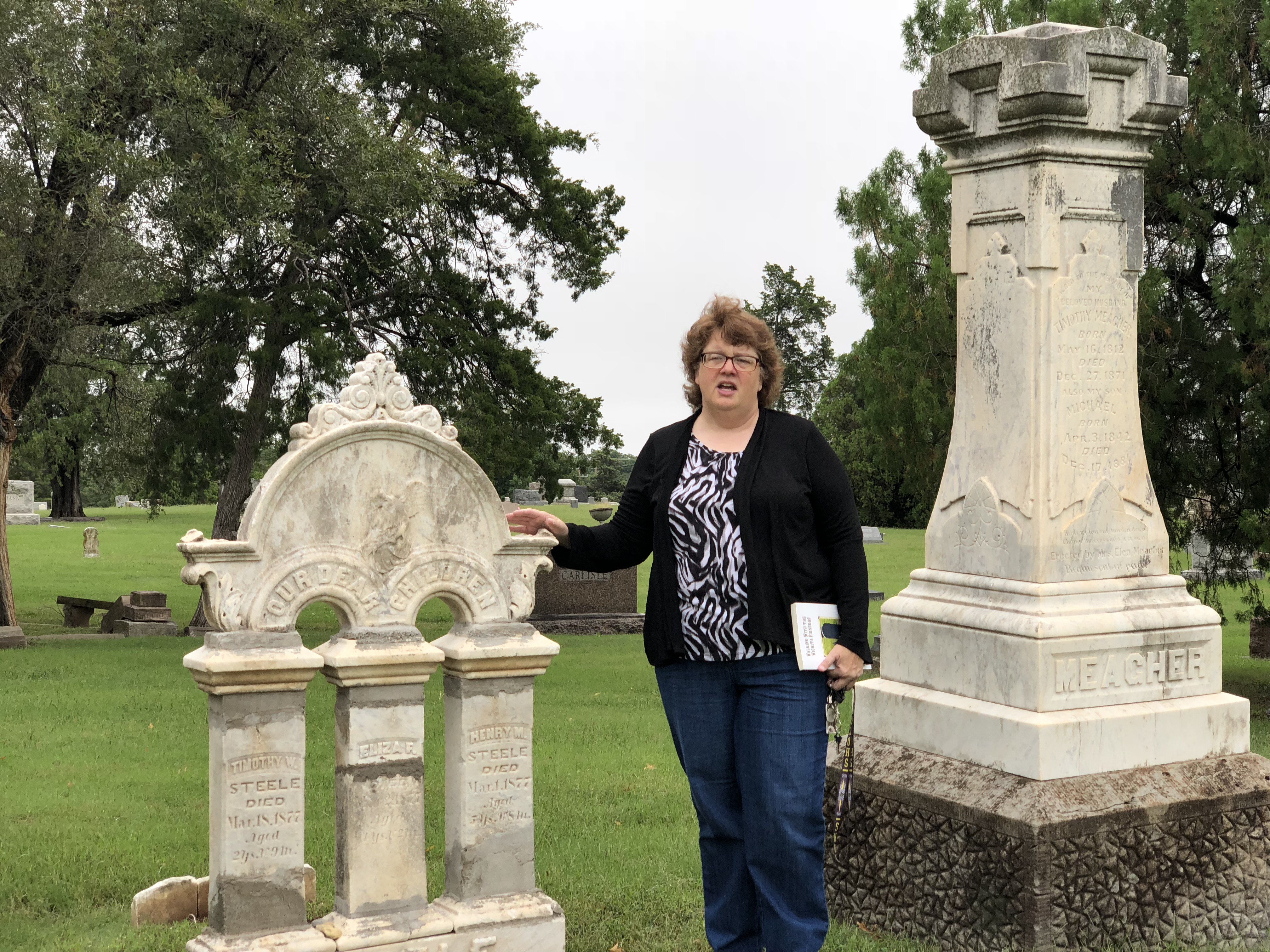This is adapted from the author’s introduction to “Walking With The Wichita Pioneers: A Guidebook to Highland Cemetery” by Barb Myers. The book sells for $20, with all proceeds going to renovate Highland Cemetery.
Name one thing we all have in common. Go ahead, I’ll wait….
Yes, we all die eventually. And what did all people who died in Wichita have in common from 1868-1888?
They were all buried at Highland Cemetery. (Ok, except for those occasional burials by the river.)
Because death is such a taboo topic, I get asked a lot “Why do you want to do this?” So let me tell you.
In 2014, I was taking a Kansas history class at Wichita State University. I needed to research Wichita history, and in doing so, I noticed many of the people I was researching were buried at Highland.
I had no idea about the history of the cemetery, only that there were many interesting people buried there. The problem was: There were very few records, and it appeared that little had ever been written about the cemetery.
I decided to share what I found. I started giving historical tours of the cemetery and talks in the community. We discuss not only the history of Highland, and of Wichita, but also cemetery etiquette and burial customs. As I would like to be an educator, it is important to me that I can teach what I have learned to others. I started a Facebook page, Wichita History From My Perspective, and then a second, called Friends of the Wichita Pioneers, just for the cemetery.
The next step started while I was giving tours. Participants asked if there was anything we could do to fix the stones that were in such bad shape. I started looking at what needed to be done.
Since the city of Wichita owns the cemetery, we had to get permission to make any repairs or changes to it. So, in 2017, I filed for non-profit status for the Friends of the Wichita Pioneers, for the purpose of taking care of the cemetery without taking money from the park department’s budget.
The only funds we have access to are donations and grants. We entered into a Memorandum of Understanding with the City, which allows us to preserve the cemetery. The only caveat is we must have permission from the families whose graves we are repairing.
This book is an abbreviated version of research I’ve done as a thesis project for my graduate studies. Here’s a small part of what I learned:
Wichita was founded by immigrants and homesteaders from all over the world, and continues to attract the former. Highland has burials originating from Germany, Ireland, Scotland, England, Sweden, Greece, Lebanon, Mexico and Vietnam.
Catholics, Protestants and Jews are buried at Highland. Pagans and others, too.
I noticed an obvious economic disparity in burials. Literally, the top of the hill, at the intersection of blocks one, two, three and four, seemed to be mainly for the burials of the affluent; the outer areas are for the mainly middle class; and block four trends toward lower income folks.
Probably the most surprising thing I found out about Highland was the division of race. Were there laws in Wichita and in Kansas that required segregation of graves?
The conclusion I came to is that the racial divide at Highland had to have been made by Highland’s own management (which I explain in more detail in the book), but was perpetuated by personal choice. Families choose to be buried by family members, and that is human nature.
Different people refer to death differently. African Americans call it home-going. Native Americans and Pagans call it returning to Mother Earth.
Some funerals are somber affairs, and some play Dixieland music. Some people have huge markers, others don’t want one at all.
But one thing is always the same: We all die, and we all deserve a kind and respectful burial, in a cemetery plot of our own choosing.
Contact Barb Myers at
b_myers123@live.com









